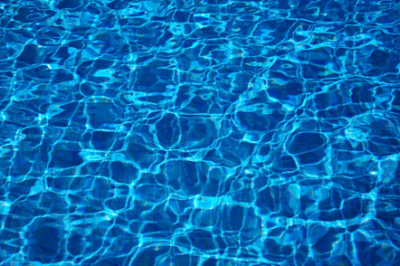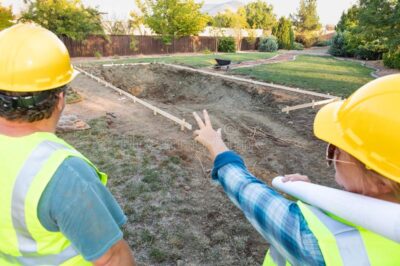How to raise the pH level in your swimming pool? is the common question every swimming pool owner have these days.
The number of factors that must be managed when maintaining swimming pool water is numerous. Most people think of pool maintenance as simply adding sanitizer, adjusting the pH, and running the filter on a regular basis. In fact, swimming pool maintenance entails a lot more.
What are the ideal values? We recommend a pH between 7.2 and 7.8. Your pool should not be too acidic or too basic. There can be risks for your health. A pH too low will cause itching and red eyes.
Why It Is Important To Balance The pH Level In The Swimming Pool?
A pH that is too low also causes damage to your pool and its users. It makes the water irritating to the skin and eyes and can damage the filtration equipment.
Chemicals are used to disinfect and oxidise swimming pool water. To maintain sanitary swimming conditions and the durability of pool equipment, an ideal pH balance is required. While other chemicals have been added to the market, chlorine is the most commonly used chemical to treat swimming pools.
How Chlorine Works?
- It kills bacteria and algae that cause waterborne illnesses, disinfecting the water. Swimmers can contract diarrhoea, ear infections, or skin infections as a result of bacteria in pool water.
- Chlorine also oxidises (or neutralises) dirt and debris particles introduced by swimmers and the environment.
Benefits of Maintaining The pH Level:
Maintaining an ideal pH is critical because it can affect the chlorine’s efficacy and, as a result, lead to unsanitary swimming conditions.
- It is important for swimmers’ comfort – the ideal pH for swimming pools is the same as the pH of the human eye and mucous membranes. For swimmers, an unbalanced pH may cause itchy and irritated skin and eyes.
- The pH balance of the pool’s facilities and equipment is critical to their long-term viability.
- Pool water that is too acidic is corrosive, causing equipment such as pumps, ladders, and diving board structures to fail.
- In addition, unbalanced pH levels wear down the pool liner, necessitating more frequent replacements.
Causes Of Low pH Level
Low pH levels cause a variety of problems, including:
- premature grout degradation
- corroded fixtures such as ladders and diving boards
- Pool liners become brittle and break when the pH is too low
- It also causes swimmers pain, such as burning eyes and itchy feet.
Causes
- Low pH levels are usually caused by natural causes such as a heavy rainstorm, overuse, or excessive chemical use.
- Rainwater has a pH of 5–5.5, which makes it naturally acidic
- A significant amount of rain can cause the pH of pool water to change, making it more acidic. Following a large group, pH levels can be low.
- Since dissolved bodily fluids will lower pH levels, overuse may be the cause if you’ve had a lot of swimmers in your pool lately.
- Despite our best efforts, all of the pH-controlling concoctions on the market can still do more harm than good.
- When trying to DIY a solution to a pool water dilemma, it’s easy to get pH levels out of whack.
How To Raise pH Level In Your Swimming Pool
Maybe there was something wrong with the water in your tub, or maybe it was just time to test it. You perform the test and discover that the pH level is low. You retake it just to be sure – and the score is still poor. What steps will you take to restore pH equilibrium and lift the pH level?
- Make sure your reagents are up to date.
- Check for alkalinity and add baking soda to aerate the water.
Products To Raise pH Level In Your Swimming Pool
To solve this problem, use a pH Plus product to dilute in a bucket before pouring it into the pool. Let the pumps and filtration systems run to mix the pool water and wait at least 8 hours before testing the pool water again. During this time, it is forbidden to swim in the pool.
Note that it is not always necessary to purchase a solution to increase the pH. For example, you can use baking soda diluted in water to increase the pH of your pool.
Remember to dilute the pH in a bucket beforehand and mix a little to avoid corrosion of any stabilizer. Then, the most effective method is to put the pH Plus in the pond, at the outlet of the discharge nozzles. Finally, let it filter for at least 6 hours after adding the pH Plus so that the product mixes well in the pond.
To bring up a low pH level, the solution is to use a “pH plus”. This is a mixture designed to rebalance the acidity level of the water in a pool. It is available in the form of granules to be diluted or as a liquid that can be poured directly into the pool. It is recommended to dilute it in the water. Before using this type of regulator, it is essential to know the value of the hydrogen potential of the water since the dosage of pH + can vary according to the situation. Be careful, the product will also vary according to the volume of water.
Precautions:
Depending on your region, the tap water at your disposal can be more or less hard, i.e. rich in limestone. You can measure the TH to know the concentration. The TH should be checked before any pH test.
The pH of the water in a pool can be lowered by rain and elements that may fall in. Corrosion of certain metal elements in the pool can have an influence. If the water is a little more acidic, it irritates the skin and the eyes. In summer, we advise you to measure the pH of your pool every 3 days.
Skin irritation or green water are the consequences of a too acid or basic pH. The pH is the hydrogen potential, it corresponds to the concentration of hydrogen ions in your pool.










